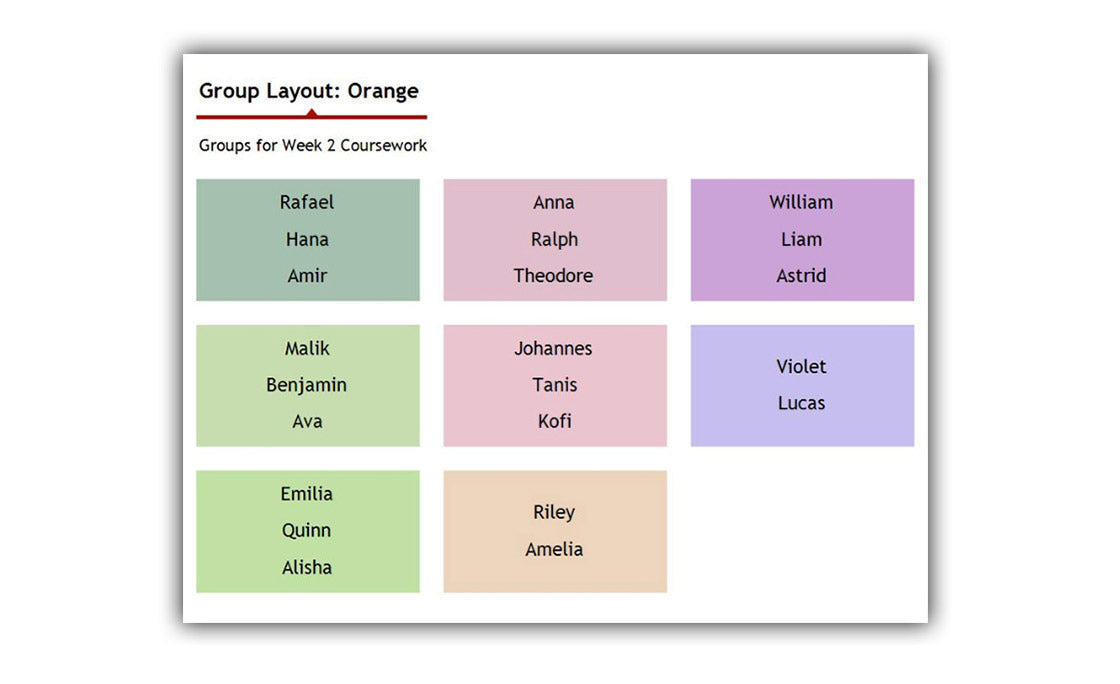You are an expert in your field. The management is very impressed with your skills and wants you to share it with others. You have been asked to give a talk to your fellow colleagues or anyone else in the company who is interested in the subject.
The day of the presentation comes. Some of your colleagues have come from other branches of your organisation to attend your talk which is part of a series of presentations. You are excited to be a presenter as this is what you always wanted to do, but you are also feeling very nervous. You have the dreaded butterflies in stomach and cannot seem to be able to shake off the nerves.
The speaker before you has now finished and it is your turn to present. You just want to get on with it now. You go on stage and set yourself up. You start the presentation while paying attention to every detail. You want to make sure your voice comes out naturally, that you are facing the audience the right way, that you are saying the sentences correctly and that you are not forgetting anything crucial.
There is also a voice in your head that constantly says, “don’t screw this up, don’t mess this up, you have got only one chance…”
Two minutes into the presentation, you suddenly feel you cannot remember what you need to say next. It’s just gone. Your mind is blank. The audience is staring at you, expecting you to say something, but you cannot think of a single word to say. You feel out of breath, almost paralyzed.
You chocked…
Why Do You Choke When Presenting in Public?
This dreadful situation is the nightmare of anyone who wants to present in public and is just as applicable to trainers. We all hate it, dread it and want to avoid it, but we feel the threat is always in the air, ready to strike at any moment.
Is there anything you can do to avoid this situation?
Recent research by psychologists on the performance of brain under stressful or demanding conditions has shed light on this.
Research in the past has established that audience pressure and high expectations makes us nervous and susceptible to choking. Hence, the advice has usually been like this; you should slow down your delivery to allow yourself more time to think. Researchers believed that slowing down will help prevent nervousness and will eventually lead to a better performance.
We can call this performance enhancing method, the direct approach. However, new research shows that an indirect approach could be more successful.
A study was carried out in 2008 on a group of golfers (Markman et al. 2006). A group of golfers were divided into two groups; one consisting of novice golfers and the other of experienced golfers. The researchers then instructed each group to perform a series of golf putts, though each group had to do this with two specific instructions. In one round, each group was given as much time as they wanted to perform. In the second round, each group was instructed to swing as quickly as they could.
The results were quite interesting.
Novice golfers performed poorly when instructed to speed up but did better with more time. However, the skilled golfers exhibited exactly the opposite pattern. The skilled golfers performed less accurately with more time but did much better when they were hurried to perform quickly.
The researchers suggest that the reason for this pattern of behaviour is that when skilled golfers are given extra time, they spend too much time thinking and worrying about their moves. This in turn forces their brain to “solve” the problem on the spot as opposed to tap into previous stored experience. This leads them to closely monitor their performance, become more stressed and perform poorly.
In other words, too much self-monitoring hinders your performance.
So when you choke while presenting, it is possible that you are monitoring yourself too closely and trying too hard to perform well. To learn how to avoid this, it is useful to see how the brain works in these circumstances.
How the Brain Works?
When you are learning or consciously thinking about a problem, the most active part of your brain is the cerebral cortex. On the other hand, if you practice something over and over, such as playing music, the entire sequence of activities is stored in the cerebellum. Cerebellum is most active when you are playing from memory using “muscle memory”.
For example, when you press a key on a piano while playing music from memory, you just “know” what to press next. Your fingers will travel to the correct key on the keyboard within a fraction of a second and with little conscious effort.
In fact, that is the key to the difference between the direct and indirect methods. Your cerebellum is not consciously accessible. Research indicates that if you are just accessing your cerebellum to play music, you might retrieve the next note in about 50 milliseconds. In contrast, if you try to consciously monitor your performance, you will override the benefits provided by cerebellum and will start to engage your much slower cerebral cortex. To put this into context, if you are using your cerebral cortex to press the right key on the piano it takes 100 milliseconds just for a signal to travel from your cochlea in your ear to your brain. If you are going to be consciously monitoring this signal, you will perform much slower and as a result much worst.
Suppose you want to control the natural inflections in your voice as you present an important idea, discovery or lesson during a presentation. In this case you will be using the direct method. You need to consciously control this and will employ your cerebral cortex. The constant engagement and the delays in coming up with just the right words and at the right time can easily leave you at a loss for words. It can lead you to choke.
The problem is that you are focusing too hard and the focus is putting a lot of demand on your brain and performance. To avoid this, focus on a single word or an idea that sums up your entire presentation.
The Ultimate Solution
Your ultimate aim is to give a flawless public performance effortlessly. There is actually an experience that has exactly the same quality; a rehearsal. Your rehearsals are usually much more comfortable. After a few performances you start to get the feeling that this is coming naturally to you. The question is to see what you can do to present a live performance with the same comfort as a rehearsal.
According to Raôul R. D. Oudejans, a psychologist at Free University Amsterdam, the trick is that during rehearsal you should subject yourself to the same level of anxiety that you expect to receive when you are under the spotlight.
One of the most effective ways to immunise yourself against anxiety and choking on the day of performance is to train under pressure from day one. Many people know the importance of rehearsal and repetition and there is nothing new here. However, very few people rehearse under pressure by adding artificial psychological constraints. It is this particular area that shows to be very promising in improving your live performance.
The more exposure you get to a highly stressful situation, the less anxiety you feel when you encounter it again during a live performance.
Anti-Choking Strategies for Public Speaking
To train under pressure for public speaking, giving a training course, presenting at a conference or any public performance with an audience, consider using the following strategies during rehearsal:
- Record yourself with a video. The video will increase the pressure on you since you know you will watch it later and will scrutinise yourself. This will push you to focus more intently during your rehearsal.
- Present to family and friends. Ask them to act much like your expected audience. Ask them to be hard on you, scrutinising and judgemental. You don’t want to practice with a friendly audience if your talk is about a revolutionary new theory to an audience who came up with the current established theory.
- Teach family and friends. If you are rehearsing for a training course, train family and friends who don’t know anything about the topic and don’t even have any interest in it (for example, the subject matter doesn’t relate to what they do daily). See how much you can teach them and keep them engaged.
- Ask friends and family to set you up with unexpected situations. For example, one of them can suddenly enter the room while you are performing and interrupt your presentation asking for something unimportant. See how well you manage the interruption in front the audience without losing your position in the presentation when you get back to it. Another person can sabotage your computer so your PowerPoint slides don’t load or your wireless mouse stops functioning. You will need to think on the spot on how to proceed and manage the situation. Ask some fiends to be particularly difficult. You can even give them canned difficult questions and see how you answer them. Make sure to video the entire performance for added pressure and reference for further scrutiny.
Remember, the most important aspect of your rehearsal and your training is to put you in as many difficult situations as possible so when the day comes to perform, you feel you have gone through much worst before and this is nothing to compare. It is the same strategy used by samurai or even gladiators where their lives were at stake even during a practice match.
At least you don’t have to die for your public performance, but you know to what extent you may need to go to become an exceptional presenter.
References
Markman, A.A., Maddox W.T. and Worthy, D.A., (2006) “Choking and Excelling under Pressure”, Psychological Science, Vol. 17, No. 11, pages 944–948; 2006.
Soft Skills Training Materials
Get downloadable training materials
Online Train the Trainer Course:
Core Skills
Learn How to Become the Best Trainer in Your Field
All Tags
Training Resources for You

Course Design Strategy
Available as paperback and ebook

Free Training Resources
Download a free comprehensive training package including training guidelines, soft skills training activities, assessment forms and useful training resources that you can use to enhance your courses.

Our Comprehensive Guide to Body Language

Train the Trainer Resources
Get Insights - Read Guides and Books - Attend Courses
Training Materials
Get downloadable training materials on: Management Training, Personal Development, Interpersonal Development, Human Resources, and Sales & Marketing














Leave a comment
All comments are moderated before being published.
This site is protected by hCaptcha and the hCaptcha Privacy Policy and Terms of Service apply.